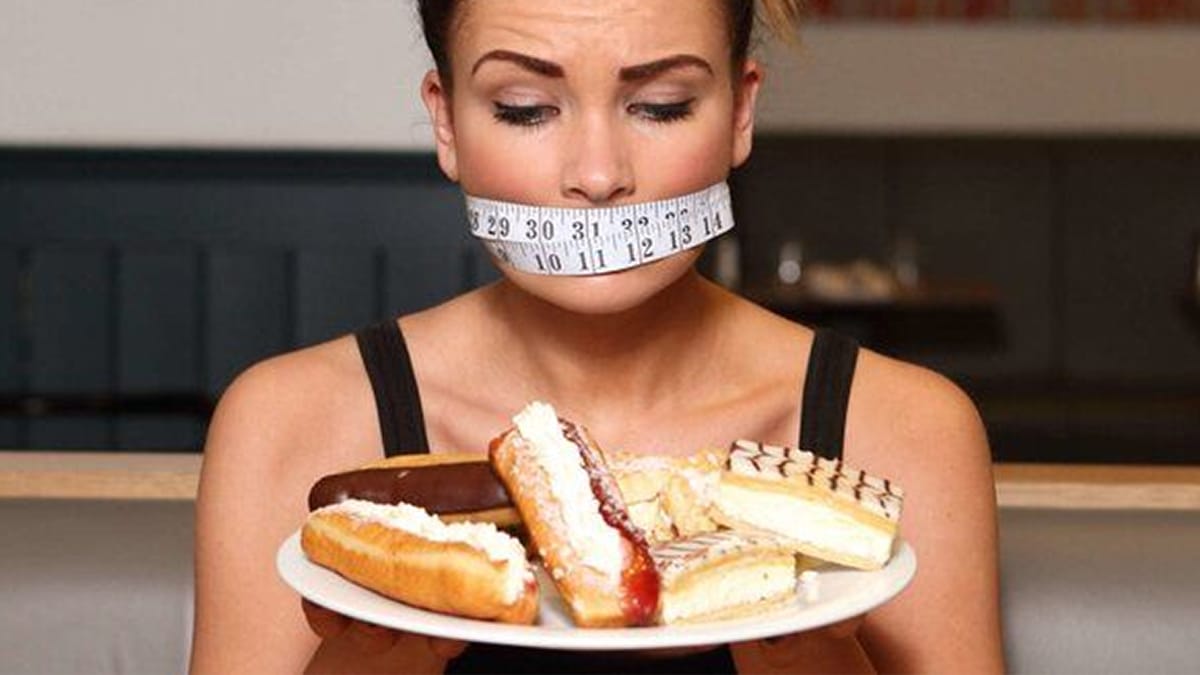10 Unexpected Lifestyle Triggers Behind Weight Loss Failure
Most people believe that weight loss failure is all about eating too much or exercising too little. Yet thousands of motivated individuals still find themselves frustrated, stuck, and wondering why the pounds refuse to budge. The truth is sobering: behind almost every stalled fat-loss journey are hidden lifestyle triggers that silently sabotage progress. Identifying and fixing these triggers can dramatically increase your chance of success.
10 Unexpected Lifestyle Triggers Behind Weight Loss Failure
This article uncovers ten unexpected lifestyle triggers that derail weight loss programs. Drawing on research from respected sources like Harvard University, the National Institutes of Health, and major peer-reviewed journals, you’ll discover what’s really blocking your progress and how to address each factor with proven strategies.
By the end, you’ll have a clear roadmap for avoiding these traps and creating a sustainable plan that actually works.

1. Chronic Sleep Deprivation
Countless people underestimate how profoundly sleep influences metabolism. Studies from Harvard Medical School show that even moderate sleep restriction (less than 6–7 hours per night) elevates hunger hormones like ghrelin and lowers satiety hormones like leptin, making it almost impossible to stick to a calorie deficit. Chronic fatigue also reduces your willpower, increases late-night snacking, and blunts fat burning.
Solution: Prioritize 7–9 hours of quality sleep. Keep your bedroom dark and cool, avoid blue light an hour before bed, and create a relaxing bedtime ritual. Even a small improvement in sleep can translate into easier fat loss and stronger workouts.
2. Hidden Liquid Calories
You might be eating “clean” meals but sipping away your calorie deficit. Sugary coffee drinks, fruit smoothies, flavored waters, alcoholic beverages, and even so-called healthy juices can add hundreds of unnoticed calories per day. Research published in the American Journal of Clinical Nutrition shows liquid calories are less satiating than solid food, leading to overconsumption.
Solution: Track every beverage for a week. Replace high-calorie drinks with water, unsweetened tea, or black coffee. If you enjoy smoothies, measure ingredients and limit added sugars. These changes alone can create a 200–400 calorie gap daily without feeling deprived.

3. Unmanaged Stress and Cortisol Spikes
Modern life is stressful, and chronic stress elevates cortisol, a hormone linked with increased appetite, belly fat storage, and muscle breakdown. A review in Obesity Reviews found that individuals under high stress often unconsciously eat more calorie-dense comfort foods and experience impaired fat loss.
Solution: Build stress-management practices into your daily routine — meditation, deep breathing, yoga, or even brief nature walks. Setting clear work-life boundaries and practicing gratitude journaling have been shown to lower perceived stress and cortisol. Less stress equals easier weight control.
4. Sedentary Micro-Habits
Hitting the gym three times a week is not enough if you spend the other 160+ hours sitting. Non-exercise activity thermogenesis (NEAT) — all the calories you burn outside formal workouts — can vary by hundreds of calories daily. People who fidget, stand, and walk more burn dramatically more than those who don’t.
Solution: Incorporate movement into your day: stand during phone calls, take the stairs, park farther away, and aim for at least 7,000–10,000 steps daily. Small increases in NEAT can rival the calorie burn of a gym session and accelerate fat loss without extra workouts.
5. Inaccurate Portion Estimation
Many dieters “eyeball” portions and underestimate calories by 20–50 percent. This gap is enough to erase your intended deficit and stall weight loss. Research from Cornell University shows that even nutrition professionals misjudge portion sizes when not using measuring tools.
Solution: For at least two weeks, weigh or measure your food to recalibrate your internal sense of portion sizes. Use a kitchen scale, measuring cups, or a tracking app. After this “calibration period,” your eyes will be more accurate and you can maintain results with less effort.
6. Skipping Balanced Meals and Over-Relying on Snacks
One of the sneakiest triggers behind weight loss failure is skipping balanced meals and relying on quick snacks. When you skip a proper meal, your blood sugar fluctuates wildly, your hunger hormones spike, and you’re far more likely to binge later in the day. Even healthy-looking snack bars or “low-fat” crackers can be calorie-dense and nutrient-poor.
Solution: Structure three balanced meals per day that include lean protein, healthy fats, and fiber-rich carbohydrates. If you must snack, pre-portion it and choose whole-food options like a handful of nuts, Greek yogurt, or cut-up vegetables. This approach stabilizes your appetite and improves adherence to your calorie goal.
7. Social Eating Pressure
Dining out, office parties, and family gatherings are major landmines for anyone trying to lose weight. Research published in Appetite has shown that people tend to unconsciously match the eating behavior of those around them. Peer pressure to “just have a bite” can derail your plan without you realizing it.
Solution: Plan ahead. Check restaurant menus online before going out, eat a high-protein snack before parties, and practice polite but firm ways to decline food. Remember, your health goals are valid; setting boundaries with friends and family helps you stay on track.

8. Inconsistent Exercise Intensity and Recovery
Exercising sporadically or pushing too hard without proper recovery sabotages fat loss. Overtraining raises cortisol and can increase appetite, while undertraining fails to stimulate enough calorie burn or muscle preservation. Studies in the Journal of Sports Science show that consistent, moderate-to-high-intensity training with adequate rest leads to the best body composition results.
Solution: Build a realistic exercise schedule you can maintain long-term. Combine strength training (2–3 times a week) with moderate cardio and active recovery days. Prioritize sleep, hydration, and nutrition to support your workouts. Quality and consistency beat sporadic extremes.
9. Overconfidence After Initial Success
Many people lose the first 5–10 pounds and then subconsciously relax their habits. Cheat meals become frequent, portions creep up, and workouts get skipped. This “success trap” causes plateaus or even weight regain. Research from the National Weight Control Registry highlights that maintaining weight loss requires ongoing self-monitoring.
Solution: Treat your early success as proof your plan works, not as a reason to slack off. Keep tracking your food and workouts even after progress appears. Set new non-scale goals (like improved endurance or strength) to stay motivated beyond the number on the scale.
10. Ignoring Emotional and Mindless Eating
Perhaps the most powerful lifestyle trigger of all is emotional or mindless eating. Stress, boredom, sadness, or even happiness can trigger unconscious snacking. People often underestimate how much these small “comfort” moments add up. Studies from the American Psychological Association show that emotional eaters consume significantly more calories during stressful periods.
Solution: Start a food-and-mood journal. Note what you were feeling when you reached for food. Replace emotional eating with non-food coping strategies such as a quick walk, calling a friend, or practicing breathing exercises. Seek support from a counselor or support group if patterns persist. Awareness is the first step to change.
Practical Tips to Avoid These Triggers
Audit your entire day once a week: sleep, meals, snacks, movement, stress. Spot patterns early.
Build supportive routines: plan meals, schedule workouts, and set phone reminders to move.
Communicate your goals to friends and family to reduce social pressure.
Use evidence-based resources to guide your plan; don’t rely on random internet tips.
Celebrate small wins but stay consistent to avoid the success trap.
Frequently Asked Questions
What is the most common hidden trigger behind weight loss failure?
Sleep deprivation and chronic stress are two of the biggest, most overlooked triggers because they affect hormones, appetite, and decision-making.
Can liquid calories really stop me from losing weight?
Yes. Drinks like sweetened coffee, smoothies, juices, and alcohol can quietly add hundreds of calories. Tracking beverages often reveals an easy way to cut calories.
How can I manage social eating without feeling rude?
Plan ahead, eat a protein-rich snack before events, and practice polite but firm refusals. Suggest restaurants with healthier options when possible.
Is it bad to exercise every day for faster weight loss?
Too much high-intensity exercise without recovery can backfire by raising cortisol and increasing hunger. Balance strength training, cardio, and rest days.
How do I stop emotional eating?
Keep a food-and-mood journal, identify your triggers, and develop non-food coping strategies like walking, meditation, or calling a friend. Professional support can help too.
What type of products support weight loss programs?
Some helpful non-branded options include: a digital kitchen scale for accurate portions, a meal-prep container set, a step counter or fitness tracker, a good quality yoga mat, and a reusable water bottle to stay hydrated.
Final Thoughts and Action Steps
Identify at least three triggers from this list that resonate with you.
Create a written action plan to address each trigger.
Track your sleep, stress, and movement alongside your food intake for a more complete picture.
Prioritize consistency over perfection; small changes compound over time.
Seek evidence-based guidance from reputable sources such as Harvard Health, Mayo Clinic, or government health websites.
Don’t go it alone — enlist social support, whether from friends, online groups, or professionals.
Revisit this article regularly to keep your awareness high and your weight loss program on track.
By actively addressing these unexpected lifestyle triggers, you remove the silent saboteurs that keep you stuck. With awareness, planning, and consistent action, you can transform your efforts into lasting results and finally achieve the healthier body and life you deserve.
Reference & Additional Reading
Inspired by studies and insights from:
www.health.harvard.edu
www.menshealth.com
www.healthline.com
www.womenshealthmag.com
www.ncbi.nlm.nih.gov
www.webmd.com
www.medlineplus.gov
www.tridenttech.edu
www.burnexia.com

